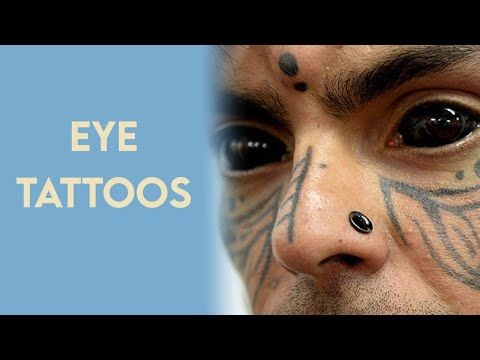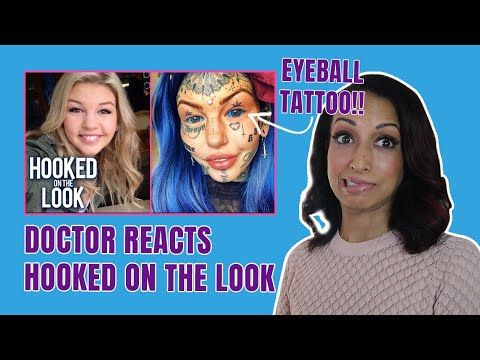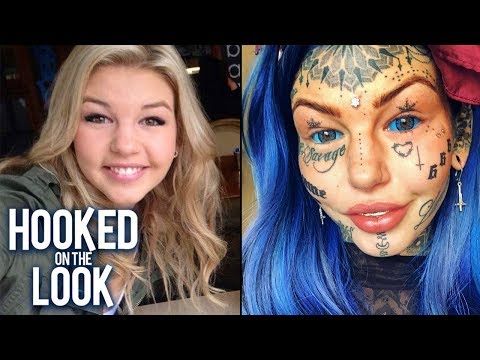The Dangers and Risks of Eye Tattoos: What You Need to Know
Eye tattoos may seem like a cool trend, but they can be really risky. They aren’t just about looking unique; they can actually hurt your eyes and even make you go blind. Our article will show you the serious dangers of getting an eye tattoo and why it’s important to think twice.
Keep reading to stay safe!
Key Takeaways
- Eye tattoos, also known as sclera tattoos, involve injecting ink into the white part of the eye. This process can lead to severe side effects like vision loss, infection, and allergic reactions.
- Getting an eye tattoo risks damaging important parts of your eyes, including the cornea and retina. Mistakes during the procedure could cause blurriness or complete blindness.
- Many artists who do eye tattoos don’t follow proper safety rules which puts you at a higher risk for problems. Always check that your tattoo artist uses safe practices and materials.
- After getting an eye tattoo, following a doctor’s care instructions is key to healing right and keeping away infections. If anything looks wrong with your eye after the tattoo, go see a doctor fast.
- An allergy to the ink used in eye tattoos could cause serious health issues. Before getting one of these tattoos, talk with a healthcare professional about any allergies to prevent dangerous reactions.
What are Eye Tattoos?
Eye tattoos, also known as sclera tattoos, involve injecting permanent color ink into the whites of the eyes to create a unique design. Common designs include magic eye, evil eye, and nazar eye.
Definition and types
Eyeball tattooing, also known as sclera tattoos, is a type of body modification where ink is injected into the white part of the eye, called the sclera. This procedure dyes the fibrous tissue, giving it a color other than white.
Tattoo artists perform this by injecting permanent color ink beneath the conjunctiva layer to spread throughout the eyes’ surface.
There are different variations of eye tattoos ranging from single-color coverage to intricate patterns and images like magic eyes or symbols such as nazar that people believe protect against evil.
Despite their uniqueness, these modifications come with substantial risks. Injecting dye into the sclera can lead to serious complications including vision loss and constant discomfort due to its invasive nature and proximity to delicate structures within the eye.
Common designs (magic eye, evil eye, nazar eye)
Eye tattoos, particularly scleral and eyeball tattoos, are often chosen for their uniqueness and striking appearance. Some common designs include:
- Magic Eye: This design creates an illusion of depth and movement, often with intricate patterns and geometric shapes.
- Evil Eye: A symbol believed to offer protection from negative energies and harm in many cultures, featuring a bold, eye-catching design.
- Nazar Eye: A symbol of protection against the “evil eye,” typically depicted as a blue eye-shaped amulet or talisman.
Eye Tattoos and Health Risks
Eye tattoos pose significant health risks including eye damage and potential vision loss, as well as the possibility of infection and scarring. Allergic reactions to the tattoo ink can also occur, making it important to consider these risks before getting an eye tattoo.
Eye damage and vision loss
Eye damage and vision loss are serious risks associated with eye tattoos. The injection or ink used in the procedure can lead to retinal detachment, permanent damage to cells crucial for vision, and a heightened risk of infection.
Additionally, scleral tattooing poses a high risk of decreased vision or complete blindness due to its close proximity to sensitive tissues inside the eyeball.
Potential dangers that individuals should carefully consider before deciding to undergo this risky cosmetic trend include constant discomfort, blurred vision, glaucoma, cataracts, corneal injury, and potential total blindness.
Infection and scarring
Eye tattoos pose a significant risk of infection, potentially leading to severe health complications. The injection for eye tattoos should be done with utmost care and precision to avoid introducing bacteria into the delicate tissues of the eye.
Moreover, scarring can occur due to the body’s natural healing response to the tattooing process. Scleral tattooing carries a high risk of infection due to its proximity to sensitive tissues inside the eyeball, making it crucial for individuals to consider these potential dangers before deciding on such a procedure.
Tattooing the sclera can result in damage that leads to decreased vision or total vision loss, putting individuals at risk for constant discomfort and potential lifelong visual impairment.
Allergic reactions
Following the risks of infection and scarring associated with eye tattoos, allergic reactions are another concerning issue to consider. Ink injected into the delicate tissues of the eye can trigger adverse bodily responses.
Notably, allergic reactions may result in redness, itching, swelling, or even more severe symptoms such as difficulty breathing or anaphylaxis. It is critical for individuals considering eye tattoos to recognize these potential risks and thoroughly discuss any allergies with a healthcare professional before proceeding with this procedure.
Allergic reactions to tattoo ink have been known to cause serious health complications, emphasizing the importance of comprehensive research and consultation prior to deciding on an eye tattoo.
Unregulated Tattoo Practices
Many eye tattoo artists operate without proper safety precautions and use unsafe materials, putting clients at risk of infection and other complications. It’s important to be aware of these risks when considering an eye tattoo.
Lack of safety precautions
Eye tattoos are often performed without adequate safety precautions, increasing the risk of severe complications. Unsafe materials and unsterilized equipment can lead to infections, scarring, and even blindness.
The close proximity to delicate ocular tissues means that proper safety measures are critical to avoid permanent damage and vision loss. Furthermore, the lack of regulation in this cosmetic procedure heightens the risk of using substandard ink or improper injection techniques, thereby posing a significant threat to eye health.
As we delve into the potential risks associated with eye tattoos due to the absence of strict safety guidelines, it is essential to understand how unregulated practices can lead to serious consequences for individuals seeking these unique cosmetic enhancements.
Use of unsafe materials
Eye tattoos should never be done using unsafe materials. The ink, tools, and any other equipment must meet strict safety standards to avoid serious complications. Low-quality ink can lead to infections or allergic reactions that may permanently damage the eye.
Additionally, substandard tools and equipment increase the risk of injury during the procedure. It is crucial for individuals planning to get an eye tattoo to ensure that only safe and approved materials are used by the professional performing the procedure.
Moving on to “Proper Aftercare for Eye Tattoos”..
Proper Aftercare for Eye Tattoos
After getting an eye tattoo, it’s crucial to seek professional aftercare and follow their instructions closely. This will help with the healing process and prevent infection or complications.
Importance of seeking professional aftercare
Seeking professional aftercare for eye tattoos is crucial for minimizing the risk of complications. Professional aftercare can help prevent infections, ensure proper healing, and address any potential issues early on.
Medical professionals such as ophthalmologists are equipped to provide the necessary guidance and monitoring to safeguard eye health post-tattooing. It’s imperative to prioritize seeking skilled aftercare support to mitigate the serious risks associated with eye tattoos, including vision impairment, infection, and discomfort.
When it comes to eye tattoos, professional aftercare plays a critical role in ensuring optimal healing and reducing the likelihood of long-term complications. Seeking expert care from trained professionals familiar with tattoo-related risks is essential for addressing any concerns promptly and maintaining overall eye health post-procedure.
Tips for healing and preventing infection
Seeking professional aftercare is crucial to ensure proper healing and prevent infection, especially when it comes to eye tattoos. Here are some important tips to consider for healing and preventing infection:
- Keep the eye area clean and dry at all times.
- Avoid rubbing or touching the tattooed area to prevent introducing bacteria.
- Use prescribed antibiotic ointments as directed by a medical professional.
- Be vigilant for any signs of infection such as redness, swelling, or discharge, and seek immediate medical attention if any symptoms arise.
- Follow the aftercare instructions provided by a qualified tattoo artist carefully to promote safe healing.
- Refrain from swimming or exposing the tattooed area to water that may contain bacteria during the healing process.
- Protect the eye from direct sunlight and use protective eyewear until the tattoo has fully healed.
Conclusion and Warnings
Eye tattoos pose significant health risks, including potential vision impairment and permanent eye damage. Careful consideration of these dangers is crucial before deciding to get an eye tattoo.
It’s essential to prioritize safety and seek professional aftercare to prevent infections and complications. Understanding the gravity of the risks associated with eye tattoos is paramount for making informed decisions about this potentially hazardous cosmetic procedure.
FAQs
1. What are the risks of getting an eye tattoo?
Eye tattoos come with serious dangers such as vision risks, potential for severe eye infections, and other health concerns.
2. Can eyeball tattooing be safe?
Although some seek unique tattoo ideas like eyeball tattooing, it lacks safety measures and poses high eye care risks leading to complications.
3. What should I consider before getting an eye tattoo?
Before considering an eye tattoo, think about the many dangers including the chance of infection, impact on your vision, and difficulty with removal if problems arise.
4. How do I prevent infection after an eye tattoo?
To prevent infections after getting an eye tattoo, follow strict aftercare instructions but know that even with proper care, there’s still a risk due to the nature of eyeball tattoos.
5. Are there any long-term complications from eyeball tattoos?
Yes, eyelid tatto complications can include lasting damage to your eyesight plus unexpected issues that could require medical attention or difficult-to-perform tattoo removal procedures.










